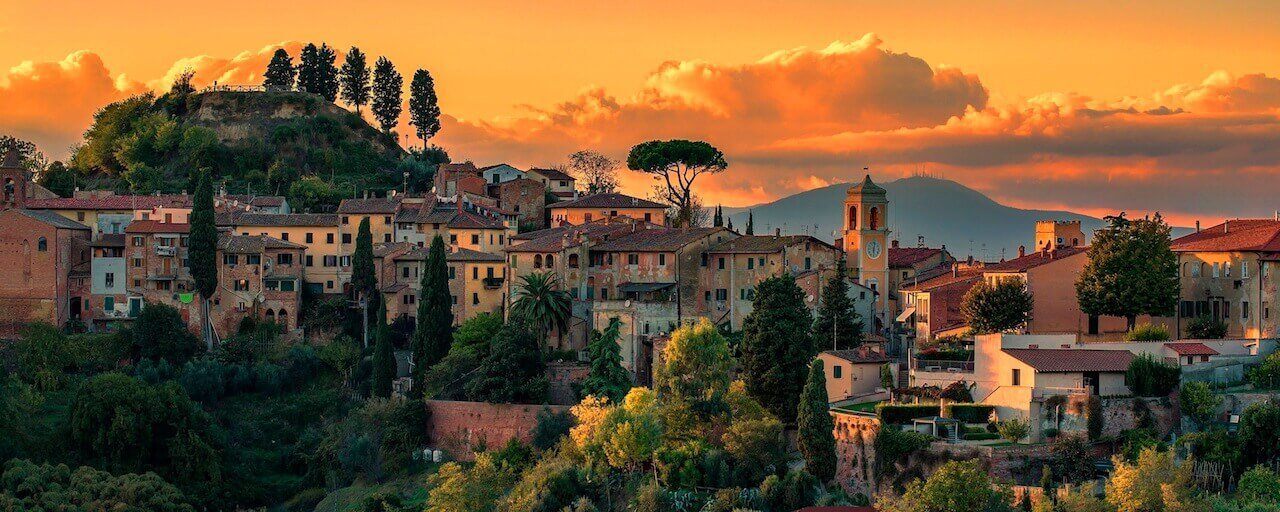Podere San Giorgio
Dating back to 1300, Podere San Giorgio sits in the heart of Tuscany in a town called Palaia. Palaia lies in the middle between Florence, Pisa and Siena, in the beautiful Tuscany countryside, surrounded by olive trees, vineyards and cypresses. It is a Agriturismo property and produces estate olive oil, and has a small café on site.
The property has two main buildings with kitchens and a variety of sleeping arrangements. The rooms available offer a mix of single and double beds, and come with either ensuite, or shared bathrooms. We will work out room assignments as the event date is closer.
Piscina & Relax: When the sun is shining bright on Podere, there’s no better place to be than the pool: tucked away under the refreshing shade of olive trees, it’s the perfect spot for relax, outdoor activities, an aperitivo at sunset or an all-day pool party. Giardino: At Podere San Giorgio, nature meets relaxation: all over the property, you’ll find areas where you can rest on a hammock or enjoy the restoring shade of the trees.
Podere is surrounded by our 20.000 sqm park: you can go for a walk under the olive trees, a morning run immersed in nature or a hike exploring the unique biodiversity of this valley.
Il Ristoro: The beating heart of Podere, where you can taste this little corner of Tuscany through its wines, cheeses, veggies, cold cuts, bread, biscuits, liquors and much more. In our philosophy, food brings connection. This is where we set up for meals and receptions, and organise our tasting and experiences: it’s the perfect spot to gather your travel companions and share special moments around the table.
The town of Palaia is about a 20 minute walk from The Villa.
Situated in the Val d'Era in the Pisa province, the village of Palaia has Etruscan roots but the "modern" town dates back to the year 1,000 AD. Then it was a castello under the control of the bishops of Lucca. It grew into a town and was caught up in the Pisa-Lucca wars started from 1172. It was annexed to the Republic of Firenze in 1406 then returned under Pisa's control in 1495. Of particular interest are the ancient churches - the Pieve di San Martino, Sant'Andrea and Santa Maria. Under Palaia's jurisdiction are 13 frazioni (outlying hamlets) some with their own histories, and a couple that are ghost towns (also intriguing to see!).
The area is still tied to agriculture, with vines, olive groves, fruit orchards, and other crops like potatoes, legumes and forest truffles being of particular importance. Gello, San Gervasio and Alica are worth a visit. And as we mentioned, there are ghost towns, so stop by Villa Saletta and/or Toiano for a step back in time. There is a certain beauty in the ruins.
Besides the pretty churches, you should definitely visit the Temple of Minerva Medica in the frazione of Montefoscoli. Set within a small woods, it was constructed in 1832 by a doctor connected to the University of Pisa, Andrea Vacca Berlinghieri, dedicated to his father, also a physician, as a personal homage and a tribute to doctors and medical personnel, which is why he chose the goddess of medicine, Minerva. (Visits are by reservation but worthwhile, especially if they're offering the full moon tour!)
There are many hiking trails throughout the area that draw lots of keen walking enthusiasts (and take you to beautiful scenery). There is also the Colline Pisane wine trail for winery visits and tastings. (cin-cin!) And you won't be without plenty to see and do, as the location is near Volterra, Pisa, Siena, Florence, San Gimignano, and the Tuscan Coast as well as the pretty Val d'Elsa.
